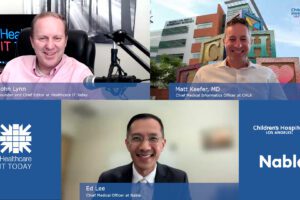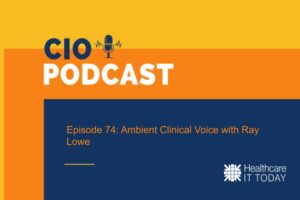The following is a guest article by Nancy Kadish, Vice President, Operations, Real World Data at Ciox.
 Patient registries are a powerful tool in population health. Experts consider disease registries one of the three pillars of IT infrastructure needed to improve population health (alongside electronic health records and patient portals).
Patient registries are a powerful tool in population health. Experts consider disease registries one of the three pillars of IT infrastructure needed to improve population health (alongside electronic health records and patient portals).
The National Institutes for Health defines a patient registry as “a collection of standardized information about a group of patients who share a condition or experience.”
Population health organizations form patient registries from data sets to understand broader implications (clinical or otherwise) for a population defined by a particular disease, condition, or exposure. Registries help payer and provider organizations alike to learn about population patterns and disease development, to recruit patients for clinical trials, and to develop drugs and treatments.
Registries are useful ways to gather cohorts with shared characteristics; to identify those in a population who use tobacco, who have cancer, or who have not had immunization, for example. As programs continue to grow around real-world information, disease prevention management, evidence-based care and population health, the time has arrived for data-driven health.
Both payers and providers alike acknowledge the registry’s unique ability to track broad population trends. Registries give population health organizations better data, which supports better population intelligence. The question today is how health organizations can form health data partnerships to build more effective registries.
The challenge
Building registries has become big business. Most registries hire educated, credentialed professionals with highly specialized clinical and technical knowledge to build and curate registries. These individuals are physicians, specialists and experts on niche diseases or population trends.
Where the expertise tends to see a drop-off, though, is in the technical department; the individuals building and managing our registries are medical experts, not data system administrators.
What payer and provider organizations need today are accreditation compliance requirement experts, analysts that manage the flow of data throughout an enterprise, and experts on sources of truth in data. To build better registries, our data gathering organizations need to deploy both physicians and data scientists.
Consider the changing role of the National Cancer Registrars Association certified tumor registrar (CTR). With rapid changes occurring throughout oncology, more and more frequent use of technology, and an ever-changing healthcare landscape, the role of the CTR is evolving into something far more data-driven. CTRs must work to keep up.
The Changing Role of the CTR
Throughout the healthcare industry, there is more data available than ever before. There is more technology available to digest it, too. Therefore, the role of the registrar is increasingly focused on data auditing and analysis to extract essential details or validate hypotheses hidden within unstructured data.
To achieve this goal, CTRs must use Natural Language Processing (NLP) software, Artificial Intelligence (AI) and Machine Learning to parse giant datasets in search of useful population health information. The role of CTR is elevating from population health specialist to qualified, and the result is that those CTRs who upskill are helping to make improvements in quality of care, treatment advancements, and better patient outcomes.
But getting there is a challenge. CTRs – and other specialized registrars throughout the provider landscape – must master best practices in data collection and abstraction. It’s a complicated, high-skill capability to manage the collection, abstraction and synthesis of data in patient-reported outcomes and physician-reported outcomes alike, and CTRs must work across a variety of manual abstraction techniques, EHR interfaces, and data sets flowing into the organization.
Extracting useful data under these circumstances is not easy.
So, then what should registries do?
The smartest providers are partnering with other private sector data partners to leverage the latest in health data technology and ensure top-shelf data quality. The leading health data organizations use AI, NLP and machine learning to parse registry software, bridge EHR interfaces, follow abstraction guidelines and monitor data quality.
The right data partners already have the experience building and analyzing vast data sets, can support the implementation of complex systems, and can execute population health strategies with data science.
The registry is powerful in the age of big data. But due to the technical skill required, organizations who stand to benefit the most are lagging in seizing the advantage. The sheer complexity of collection, abstraction and analysis of information makes the job something best served through collaboration. However, with the right partner organizations, leaders throughout the healthcare industry can better serve our populations with insights into longitudinal health data.
About Ciox
Ciox Health, a leading health technology company and proud sponsor of Healthcare IT Today, is improving patient health by transforming clinical data into actionable insights. Combined with an unmatched network offering ubiquitous access to healthcare data, Ciox’s expertise, relationships, technology and scale make a difference for healthcare stakeholders and empower greater health for patients. Through its HealthSource technology platform, which includes solutions for data acquisition, release of information, clinical coding, data abstraction, and analytics, Ciox helps clients securely and consistently solve the last mile challenges in clinical interoperability. Learn more about Ciox’s technology and solutions by visiting www.cioxhealth.com or Twitter and LinkedIn.













